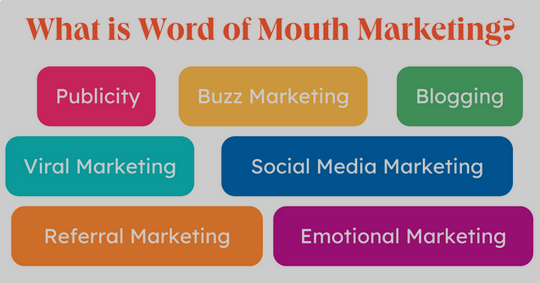Word-of-mouth (WOM) marketing has undergone significant transformation in the digital age, leveraging online platforms and social media to amplify its reach and impact. Here are key aspects of word-of-mouth marketing in the digital era:

Social Media Amplification:
Social media platforms such as Facebook, Instagram, Twitter, and LinkedIn have become powerful channels for word-of-mouth marketing. Users share their experiences, recommendations, and opinions, amplifying the reach of messages to a broader audience.
Online Reviews and Ratings:
Platforms like Yelp, TripAdvisor, Google Reviews, and others have become hubs for consumers to share their reviews and ratings. Positive reviews can significantly influence the decision-making process of potential customers, while negative reviews can have a detrimental impact.
Influencer Marketing:
Influencers, individuals with a significant online following, play a key role in digital word-of-mouth marketing. Brands collaborate with influencers to promote their products or services, leveraging the influencers’ credibility and reach to connect with their audience.
User-Generated Content (UGC):
Consumers create and share content about their experiences with products and brands. Brands encourage user-generated content through contests, challenges, or simply by creating products that naturally inspire customers to share their experiences.
Online Communities and Forums:
Niche communities and forums, such as Reddit or specialized discussion boards, provide platforms for users to seek and share recommendations. Brands can participate in these communities to engage with their target audience and facilitate positive word-of-mouth.
Referral Programs:
Digital referral programs have become popular strategies for businesses to encourage existing customers to refer friends and family. Referral codes, shareable links, and other digital tools make it easier for customers to spread the word about a product or service.
Social Sharing and Virality:
The viral nature of social media allows content to spread rapidly. Engaging, entertaining, or unique content has the potential to go viral, reaching a wide audience and generating organic word-of-mouth marketing.
Chat and Messaging Apps:
Word-of-mouth recommendations now occur within chat and messaging apps. People share product suggestions, reviews, and experiences with friends and family directly through messaging apps, contributing to a more personal form of digital word-of-mouth.
Online Communities of Interest:
Communities centered around specific interests, hobbies, or lifestyles provide a platform for like-minded individuals to exchange recommendations. Brands can tap into these communities to engage with potential customers authentically.
Real-Time Communication:
Digital word-of-mouth marketing benefits from real-time communication. Live streaming, instant messaging, and other real-time features on social media platforms enable immediate sharing of experiences and recommendations.
Analytics and Measurement:
Digital platforms offer robust analytics tools that allow businesses to measure the impact of word-of-mouth marketing efforts. Metrics such as shares, likes, comments, and conversion rates provide insights into the effectiveness of digital word-of-mouth strategies.
In the digital age, word-of-mouth marketing is not just about individuals talking to each other; it’s about leveraging technology to facilitate and amplify those conversations. Brands that actively engage with their audience, encourage positive online conversations, and monitor and respond to feedback are better positioned to benefit from the dynamics of digital word-of-mouth.
